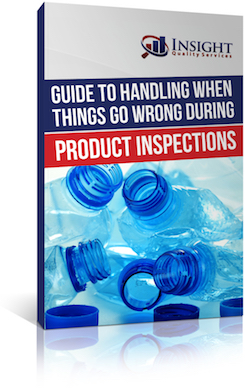An effective quality management system (QMS) provides many benefits to companies that manufacture consumer products. It can help prevent mistakes, reduce waste, and lower operating costs in your business.
If you have already developed a quality management system, you may be thinking about how to improve it for better results. Doing so will help you meet customer requirements, ensure regulatory compliance, and grow your company.
Here we offer three tips on how to improve your quality management system.
Table of Contents
What is a Quality Management System?
According to ASQ, a quality management system is “A formalized system that documents processes, procedures, and responsibilities for achieving quality policies and objectives.” The most common international standard for developing and certifying a quality management system is ISO 9001:2015.
It typically includes elements such as “The organization’s quality policy and quality objectives, quality manual, procedures, instructions, and records.” It also includes “data management, internal processes, customer satisfaction from product quality, improvement opportunities, and quality analysis.”
So how do you improve your QMS?
Tip 1: Involve Different Business Functions in the Process

You should never think of the improvement of a QMS as the responsibility of a single department. Individuals across the entire organization impact the quality of your products and processes.
When working to improve a QMS, it is also crucial to involve key leadership in important discussions. This way, you can better align your efforts with their strategic vision and develop a system that works for everyone.
Quality management involves the entire organization. It is influenced by various functions like product development and design, manufacturing, distribution, customer service, and more.
Product quality is about more than just how well each unit conforms to specifications. It’s also about satisfying customer needs to the best of your ability through performance, reliability, durability, serviceability, customer perception, and more.
Tip 2: Ensure That You are Tracking the Right Things

Having the right data is an essential key to quality management. And you must track the right key performance indicators (KPIs), as these help your organization understand how well your processes are running.
You might choose to track customer complaints, customer satisfaction, returns, reject ratios, right first time, gross margin, passed inspections, OQL, or other metrics. Whatever KPIs you choose, make sure that you collect accurate data to help you make the best decisions.
If you are conducting product inspections, you should consider whether your AQL and inspection levels are appropriate for your situation. Different products and markets will require different AQL levels, and you can adjust your inspection levels based on the factory relationship.
In general, consider what your strategic goals are and which metrics will help you track your progress.
Tip 3: Get Employees on Board and Keep Them Involved

When you are working on a revision of your quality management system, try to get the entire organization involved. By soliciting feedback from employees and incorporating it into your QMS, they will feel involved in the process and it will be easier to get their buy-in during implementation.
Keep in mind that good ideas can come from people at all levels of the company and especially from your customers. Cultivate a system that encourages employees to speak up when they have an idea about something that might impact the customer experience.
Also consider how you are training employees and giving them the knowledge they need to contribute to your quality goals. With all parts of the organization on the same page, you’ll be in a better position to make improvements.
If you’ve struggled with quality issues in the recent past, we recommend downloading the following guide.
Free Guide: What to do When Things Go Wrong
When a quality problem happens - and they will - how you approach the problem makes all the difference in successfully squelching it.
Learn how to deal with the problem at hand, see potential quality gaps throughout your supply chain, and take proactive measures to avoid future problems.





It sure was interesting when you said that different ACQ levels are going to be required for different products and markets. This must be a good tip for manufacturing companies that aim to ensure that their products are going to be of quality for the satisfaction of their clients. I could imagine how necessary it could be for them to hire a first article inspection service that follows certain guidelines to ensure that all the products will pass quality tests.
Glad you found this helpful.
I appreciate you reminding me that employees throughout the whole business are responsible for improving a QMS, which has an influence on the quality of your processes and products. I am a new business owner and plan to implement a QMS to have a structured system that records procedures. I’ll speak with the specialists to seek their opinions and assistance on this.
Glad you found this helpful.